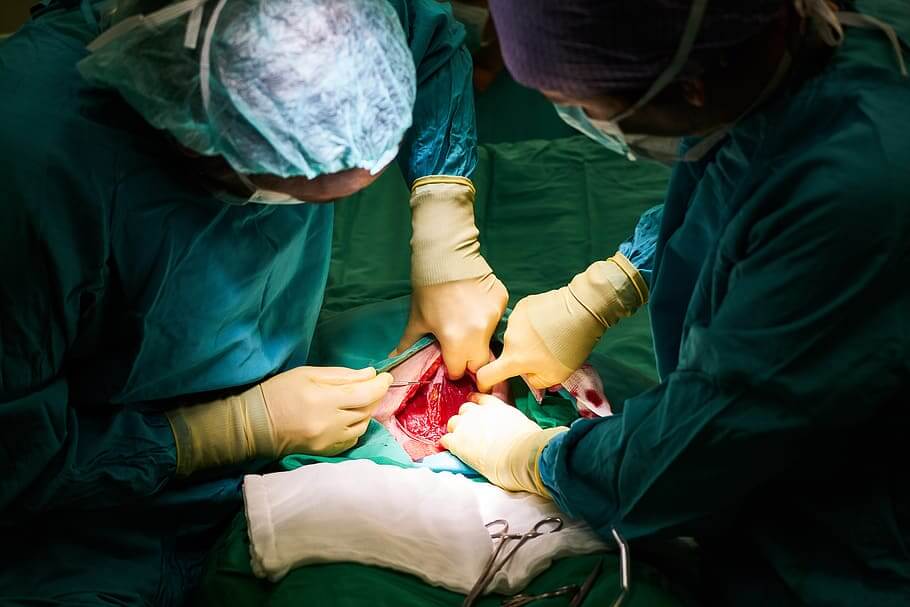Hip Joint Replacement
A joint is where two or more parts of the skeleton are fitted together, like the knee, hip, and shoulder. Joint replacement surgery is removing a damaged joint and replacing it with a new one.
Shalby Hospital offers a wide range of treatments including Joint Replacement Surgery and Shalby is the best hospital for hip replacement surgery in India.
Hip Replacement SurgeryArthritis is a progressive disorder which in medical term means ‘inflammation of the joint’. Hip Replacement is a treatment done when all other pain management therapies fail to mitigate the pain caused by the arthritis of the Hip. Hip replacement is a surgical procedure in which the hip joint is replaced by an artificial prosthetic implant. Such joint replacement surgeries are generally conducted to relieve pain caused by arthritis or severe physical damage such as hip fracture.
After the Hip Replacement surgery, the patient retains all normal motions and movements that one may need to carry out daily tasks. It is also referred to as Total Hip Arthroplasty or Total Hip Replacement.
Contact Shalby Hospital Today for Hip Joint Replacement Surgery in India.

Why Total Hip Replacement (THR) or Total Hip Arthroplasty
Osteoarthritis of the hip joint, is one of the most common reasons people opt for Hip Replacement Surgery. Hip Replacement is the only option if there is severe pain, loss of motion or deformity of the hip joint. Hip replacement can also be considered to treat people suffering from hip injuries, rheumatoid arthritis and other medical conditions, such as bone tumour or bone-loss due to insufficient blood supply (avascular necrosis).
Symptoms that require hip replacement:
- Pain that keeps one awake at night
- Little or no relief from pain medications
- Difficulty walking up or down the stairs
- Trouble standing from a seated position
- Having to stop walking because of pain
There was a time when a hip replacement was considered an option only for elderly people aged 60 and above. But latest advancements in medical technology has made strong and longer lasting artificial joints available to even active and younger people. However, the patient must also face the possibility of undergoing another surgery after 15 to 20 years to replace the worn out artificial hip joint.
Preparing for THR
Prior to the Total Hip Replacement Surgery, our orthopaedic (hip replacement) surgeon counsels the patient in person and carries out necessary examination and evaluation. The hip replacement surgeon then thoroughly checks the patient’s medical history to ensure they are healthy enough to undergo surgery, and mitigates any risks of unexpected complications. The surgeon then physically examines the hip, paying attention to range of motion in the joint and strength of the muscles around the hip. Blood tests, X-ray or other radiological investigations are routine procedures that are carried out as required.
Services Offered
- Total knee and hip replacement surgeries for the management of osteoarthritis
- Rheumatoid Arthritis Valgus or Varus deformities
- Hip fractures and deformities
Specialists
The centre is supported by…
- World-class Arthroscopic Surgeons
- Experienced Anaesthetists
- Intensive care back up
- Experienced Physiotherapists
Contact Shalby Hospitals, reputed worldwide, for Joint Replacement and Hip Replacement Surgery. Get treatment from one of the best surgeons in the world for your Knee and Hip replacement surgery at Shalby Hospitals.
- State of the Art class 100 OTs with Hepafilters
- Surgery of TKR by Innovative ‘Zero Technique’
- Full range of all Knee and Hip implants
- Full range of Radiology and Imaging (CT, MRI, X-Ray)
- Full range of Pathology and Microbiology
Blog/Tips of the day

How Long Does Hip Replacement Surgery Take to Perform
Hip replacement surgery is very common these days where the damaged hip joint of the patient is replaced with an artificial implant. This surgery becomes necessary when the hip joint is worn out or damaged in patients and their mobility is decreased or when they are in severe pain even... Read MoreProcedure and Complications of Total Hip Replacement
Brief About Total Hip Replacement Total hip replacement surgery is done to replace a damaged or worn-out hip joint. In this operation, the surgeon replaces the natural joint with an artificial one, known as prosthesis. Some people, specifically in the old age, experience immense discomfort and pain in their hip... Read MoreShalby Hospital
Hip Joint Replacement
Center Of Excellence
- Arthroscopy – Sports Injury
- Ophthalmology and Glaucoma
- Oncosurgery
- Oncology
- Obstetrics and Gynaecology
- Obesity Surgery
- Neuro Science
- Neurosurgery
- Nephrology
- Orthopedic and Trauma
- Paediatric Orthopedics
- Spine Surgery
- Rheumatology
- Radiology and Imaging
- Pulmonology and Chest
- Plastic Surgery
- Paediatrics and Neonatology
- Pathology And Microbiology
- Maxillofacial Surgery
- Knee Joint Replacement
- ENT Surgery
- Endoscopy and Laparoscopy
- Endocrinology – Diabetology
- Emergency Medicine
- Dental Cosmetic and Implantology
- Cosmetic and Aesthetic
- Cardiothoracic and Vascular Surgery
- Cardiology
- Gastrointestinal Surgery
- Gastroenterology
- Intensive and Critical Care
- Infertility and IVF
- Infectious Diseases
- Hip Joint Replacement
- Liver Transplant
- Hair Transplant
- General Surgery
- General Medicine
- Uro Surgery
- Dermatology
- Arthroplasty
- Psychiatry
- Urology
- Anesthesia




















